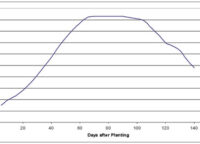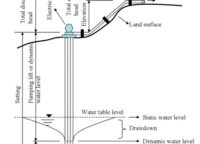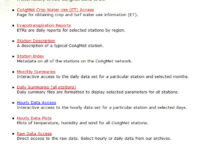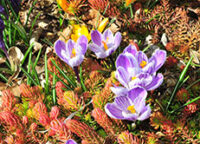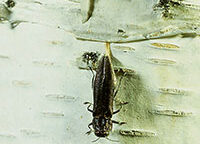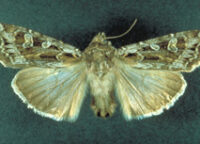- 09, 08, 2015
- No Comments.
- By admin
Extension Update – September 3, 2015
Extension Updates To assure that all of you are kept up to date on a regular basis, the three regional directors and the state Extension Administration Office provides bi-weekly Extension Updates. This forum is for all Extension announcements, so if you have something to distribute, please forward it to Lori Bates with FOR EXTENSION UPDATE […]
Take a Tour- 09, 08, 2015
- No Comments.
- By
Irrigation Scheduling: The Water Balance Approach – 4.707
Print this fact sheet by A. A. Andales, J. L. Chavez, T. A. Bauder* (1/15) Quick Facts… The water balance approach to irrigation scheduling keeps track of the soil water deficit by accounting for all water additions and subtractions from the soil root zone. Crop water consumption or evapotranspiration accounts for the biggest subtraction of […]
Take a Tour- 09, 08, 2015
- No Comments.
- By
Irrigation Scheduling – 4.708
Print this fact sheet by I. Broner (2/05) Quick Facts… Irrigation scheduling is the decision of when and how much water to apply to a field. Its purpose is to maximize irrigation efficiencies by applying the exact amount of water needed to replenish the soil moisture to the desired level. Irrigation scheduling saves water and […]
Take a Tour- 09, 08, 2015
- No Comments.
- By
Irrigation Pumping Plant Efficiency – 4.712
Print this fact sheet by J.L. Chávez, D. Reich, J.C. Loftis, and D.L. Miles *(9/11) Quick Facts… Most irrigation pumping plants have excessive operating costs because they are often in need of repair, poorly matched to the pumping load, or incorrectly plumbed using more power or fuel than they should. Pumping plant performance can be […]
Take a Tour- 09, 08, 2015
- No Comments.
- By
Crop Water Use and Growth Stages – 4.715
Print this fact sheet by M.M. Al-Kaisi and I. Broner* (3/13) Quick Facts… Water stress during critical growth periods reduces yield and quality of crops. Crop water use (ET) at critical growth stages can be used in irrigation scheduling to avoid stressing crops. Crop water use (ET) is weather dependent as well as soil, water […]
Take a Tour- 09, 08, 2015
- No Comments.
- By
The Colorado Agricultural Meteorological Network (CoAgMet) and Crop ET Reports – 4.723
Print this fact sheet by A.A. Andales, T. A. Bauder and N. J. Doesken* (3/13) Quick Facts…. CoAgMet is a network of automatic weather stations that provides Internet access to weather and crop water use data. CoAgMet provides weather data in different formats, including daily or monthly summaries, hourly data, and graphs. Crop water use […]
Take a Tour- 08, 28, 2015
- No Comments.
- By admin
Bulbs for Fall Planting
Loni Gaudet Colorado State University Extension Master Gardener in Larimer County August 29, 2015 As we head into fall, we think about our late season garden chores – cleaning up, mulching, gathering seeds and maybe setting up cold frames for winter veggies. But fall bulb planting is an easy way to jump-start the spring gardening […]
Take a Tour- 08, 11, 2015
- No Comments.
- By admin
Shade Tree Borers – 5.530
Print this fact sheet by W.S. Cranshaw* (1/19) Quick Facts… Wood borers are insects that develop underneath the bark of trees and shrubs. Certain beetles and moths are the most common borers. Insecticides can best control most shade tree borers if they are applied when adult insects are laying eggs on tree trunks. Most wood […]
Take a Tour- 08, 07, 2015
- No Comments.
- By
Miller Moths – 5.597
Print this fact sheet by W.S. Cranshaw* (7/14) Quick Facts… The ‘miller moth,’ common in Colorado and adjacent states, is the adult stage of the army cutworm. The caterpillar stage of the army cutworm feeds on crops and garden plants in winter and early spring. The adult form of the army cutworm feeds on nectar […]
Take a Tour- 08, 05, 2015
- Comments Off on Soil Erosion Control after Wildfire – 6.308
- By admin
Soil Erosion Control after Wildfire – 6.308
Print this fact sheet by R. Moench and J. Fusaro* (1/12) Quick Facts… The most immediate consequence of fire is the potential for soil erosion. Intense heat from fire can make the soil repel water, a condition called hydrophobicity. Landowners should take quick action to minimize erosion once it’s safe to return to the property: […]
Take a Tour
